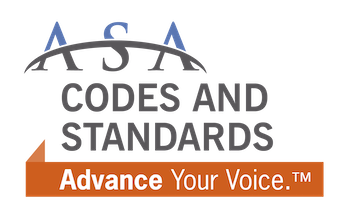PHCP-PVF supply chain to be affected; Jan. 1, 2022 date set for new fixture water efficiency compliance.
By Jim Kendzel, MPH, CAE Director of Codes and Standards American Supply Association
On March 25, Massachusetts Governor Charlie Baker signed Chapter 8 of the Acts of 2021 titled An Act Creating A Next-Generation Roadmap For Massachusetts Climate Policy.
The new law represents a significant revision to Massachusetts General Laws, Chapter 21N. The enacted bill has direct impact on the plumbing-heating-cooling-piping (PHCP) and industrial pipe-valve-fitting (PVF) supply chains related to the products delivered, and provides specific deadlines for compliance.

The key takeaways for ASA members and others in the PHCP and PVF supply chain are the following:
- The following plumbing fixtures — faucet, showerhead, spray sprinkler body, urinal, water closet or water cooler — will not be able to be sold in the state of Massachusetts after Jan. 1, 2022 unless they comply with the new water efficiency requirements.
- The state will require further emissions reductions in six “high-priority” sectors of the economy: electric power, transportation, commercial and industrial heating and cooling, residential heating and cooling, industrial processes, and natural gas distribution and service.
- The law allows for local municipalities to set local bans on the use of fossil fuels, such as oil or natural gas.The following highlights the key elements covered in the 56-page document signed by the governor:
Sets emission limits in high-priority sectors
The overall goals set in the act is a greenhouse gas emission limit of net zero for 2050 in no event shall the level of emissions in 2050 be higher than a level 85% below the 1990 level; previously was set at 80% of 1990 level. The Secretary of Energy and Environmental Affairs mandated to set interim 5-year emission limits beginning in 2025 and up to 2050.
In addition to setting an overall emissions limit goal, the state will require further emissions reductions in six “high-priority” sectors of the economy: electric power, transportation, commercial and industrial heating and cooling, residential heating and cooling, industrial processes, and natural gas distribution and service.
Heating and building emissions
The law mandates the administration to create a local net zero stretch energy code that municipalities would have the option to opt-in, and allows for cities to adopt local bans on new fossil fuel construction. In addition, the law adds four new seats to the Board of Building Regulations and Standards (BBRS) for experts in building energy efficiency, advanced building technology and the Commissioner of the Department of Energy Resources (DOER).
Sets nationally consistent appliance efficiency standards
The law includes new appliance efficiency standards according to precedents set in California and likely future federal standards. This includes certain water-saving technology relating to plumbing fixtures and sprinklers.
Increases offshore wind development by 43%
Boosts the amount of offshore wind utilities are required to purchase by an additional 2,400 megawatts. This builds upon previous legislation and will result in a total authorization to 5,600 megawatts of offshore wind for Massachusetts
Boosts Renewable Portfolio Standard (RPS)
Raises the Renewable Energy Portfolio Standard (RPS) by 3% each year for 2025-2029, which would ensure at least 40% of the state’s electric power will come from renewables by 2030.
Although the law does not set a detailed plan for reaching the stated net zero goal related to the use of fossil fuel and how reaching the goal will have an impact on commercial and residential cooling and heating, we believe we can look to California as to how the implementation of the law may progress.
In California, there is a significant push to move to a completely electric system and the elimination of the use of fossil fuels in building construction and also certain appliances such as HVAC products and water heater products. The inclusion in the law to allow local municipalities to place a ban on use of fossil fuel sources further indicates what we are experiencing in California may occur in Massachusetts; the adoption of inconsistent and overreaching local ordinances. ASA and its members whose businesses are in or have a footprint in Massachusetts will need to be watching local initiatives closely. The Secretary of Energy and Environment Affairs is required to hold public hearings to solicit input on how the setting of the interim reduction goals are set, and it is at these hearings where ASA will need to be present.
The good news is ASA recently developed and published its position on greenhouse gas reduction programs. Briefly, the ASA position states, “The American Supply Association supports programs intended to reduce Green House Gas (GHG) emissions and allow for a smooth transition to cleaner energy; however, we do not support electric-only policies.”
In addition, the ASA position calls for “flexibility” and “consumer choice” when it comes to using technology that provides a reduced level of greenhouse gas emissions, no matter the fuel source being used. Finally, ASA supports the development of policies that cover an entire state or region and opposes local ordinances developing programs due to the logistical problem in serving a market based on diverse local requirements. To learn more about the ASA position please go to the ASA webpage https://www.asa.net/Advocacy/Issues- Agenda/State-Issues.



